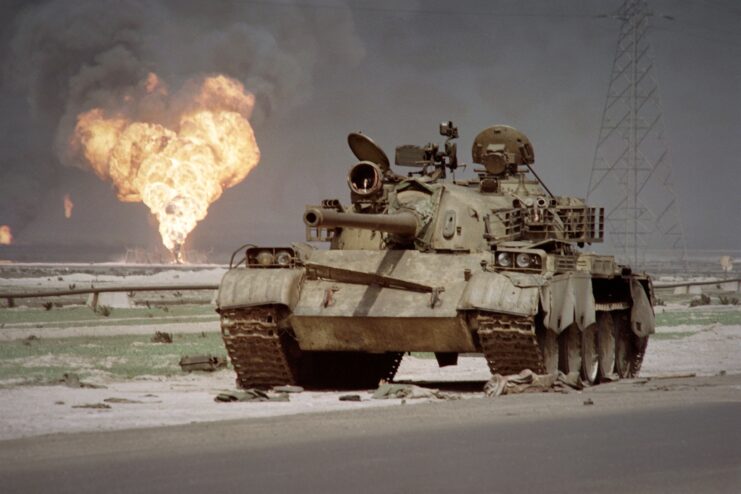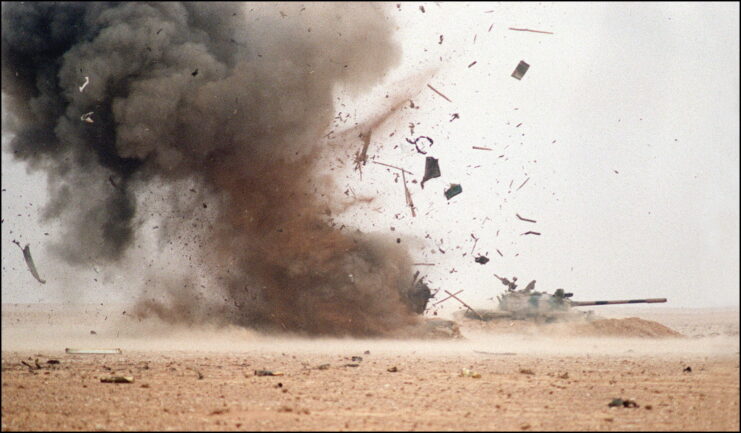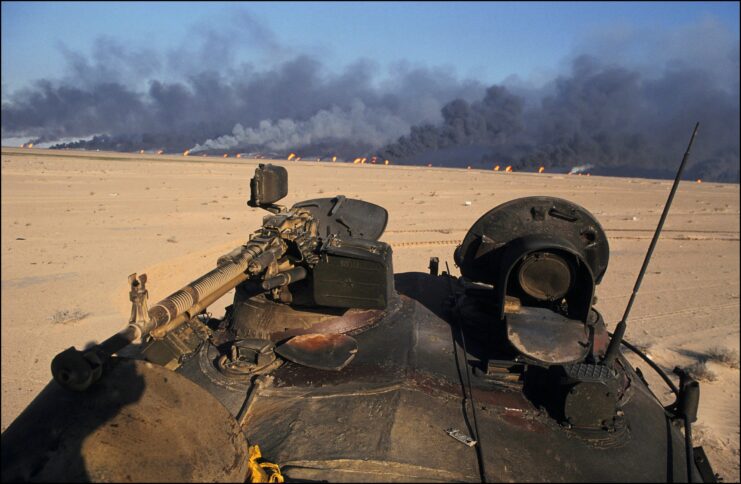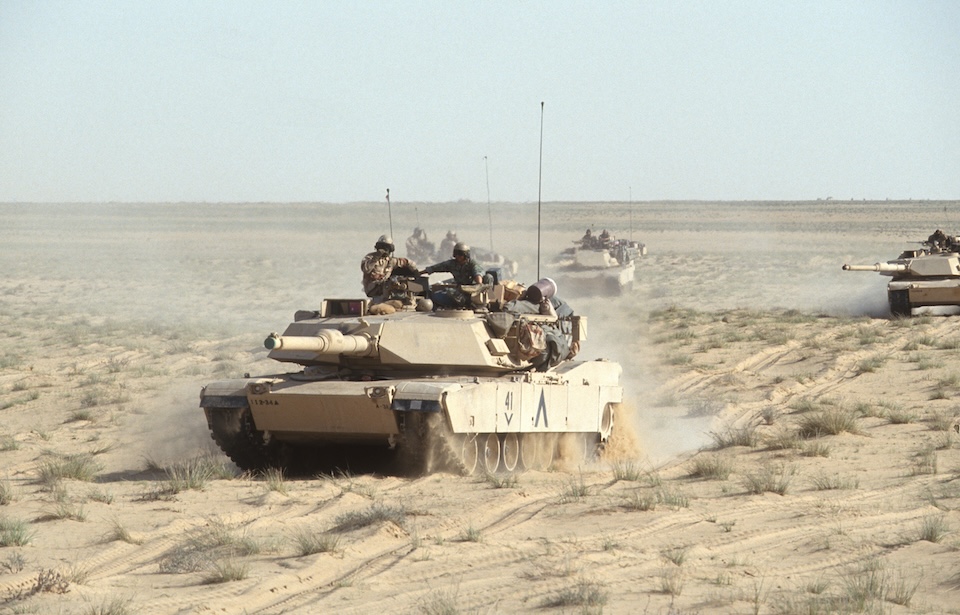Just one day after the intense confrontation at 73 Easting—widely regarded as the last great tank battle of the 20th century—the U.S. 1st Armored Division was thrust into another fierce engagement: the Battle of Medina Ridge. Fought on February 27, 1991, this clash became one of the Gulf War’s largest and most consequential armored battles. Set in the open desert terrain west of Basra, the encounter saw American and Iraqi tank units go head-to-head in a high-stakes conflict that would help define the final phase of the ground war.
The Gulf War

The Gulf War erupted after Iraq, led by President Saddam Hussein, invaded Kuwait in August 1990. In response, the United Nations Security Council issued a deadline for Iraq to withdraw from Kuwait, threatening military action if the demand was not met. When Saddam Hussein failed to comply, coalition forces launched a massive aerial and naval bombardment of Iraqi positions in the region.
Ground assault

As coalition forces advanced further into Iraq, they met with surprisingly minimal resistance. Many Iraqi troops, demoralized by weeks of relentless airstrikes, were in no condition to fight. These regular army units, often undertrained and poorly equipped, mostly served as a protective screen for Iraq’s more formidable military branch—the Republican Guard.
Answering directly to Saddam Hussein, the Republican Guard was an elite, extremely well trained unit. Its members were handpicked, better trained, and outfitted with advanced weapons and equipment. In contrast to the regular army, these troops posed a serious threat to the coalition’s progress.
By February 27, coalition forces had secured major victories and taken thousands of prisoners. That same day, the U.S. 1st Armored Division arrived at Medina Ridge—a seven-mile stretch of barren desert. What they didn’t realize was that a sizable and heavily armed contingent from the Medina Republican Guard Division lay concealed nearby, preparing to strike.
Battle of Medina Ridge

350 M1A1 Abrams main battle tanks rolled up onto the Medina Ridge at about mid-day. Overcast and rainy weather meant visibility was extremely limited so, at the top of the ridge, US tankers used their advanced optics to cut through the hazy air. Looking down, they saw what they were looking for: Iraq’s Republican Guard.
They had a mix of T-72 and T-62 tanks and were completely unaware of the US presence.
The Iraqi troops had set up a reverse slope defensive position, which can be used to negate an enemy’s advantages of longer-range weapons and force them to leave cover to engage. However, on this occasion, Iraqi forces had made a fatal error and dug in their tanks too far from the ridge. This meant their guns were unable to reach the ridge, but the longer-ranged M1A1’s guns could reach them.
The US tanks selected their targets and began opening fire, causing immediate carnage down below. They quickly realized that they were out of range of the Iraqi tanks, so they stopped their advance and took advantage of their position. The Iraqi tankers scrambled to fire up their tanks and tried to fire back at the Americans, but they were out of range and virtually invisible to them on top of the ridge.
Without any accurate return fire, the 350 American tanks had free pickings on the enemy.
As if this wasn’t enough, UH-64 Apache helicopters arrived and started launching Hellfire missiles at the Iraqi tanks. In addition, A-10 Warthogs claimed a number of enemy tanks from their deadly strafing runs.
An Iraqi artillery battery began opening fire on the US tanks, but these too fell short. While, with corrections, this artillery was more than capable of reaching the Americans, the corrections never came due to the chaos and poor visibility.
The US’ own artillery was able to locate the positions of the Iraqi artillery pieces and began counter-battery fire, quickly silencing the only enemy weapons capable of doing damage.
After two hours the battle was over. In that time, US forces managed to destroy 186 Iraqi tanks and almost 200 more armored vehicles and artillery pieces. In return, the US lost four tanks, an A-10, two attack helicopters, and two infantry fighting vehicles. There is speculation that the destroyed US tanks were hit by friendly fire.
The battle was one of the final large-scale confrontations of the Gulf War and was soon followed by a major Iraqi retreat. This effort was hampered by bombings and attacks by coalition forces. Coalition forces were so dominant that an offer for a cease-fire was drawn up, in part to address fears of a negative public reaction for continuing to attack an already devastated enemy.
